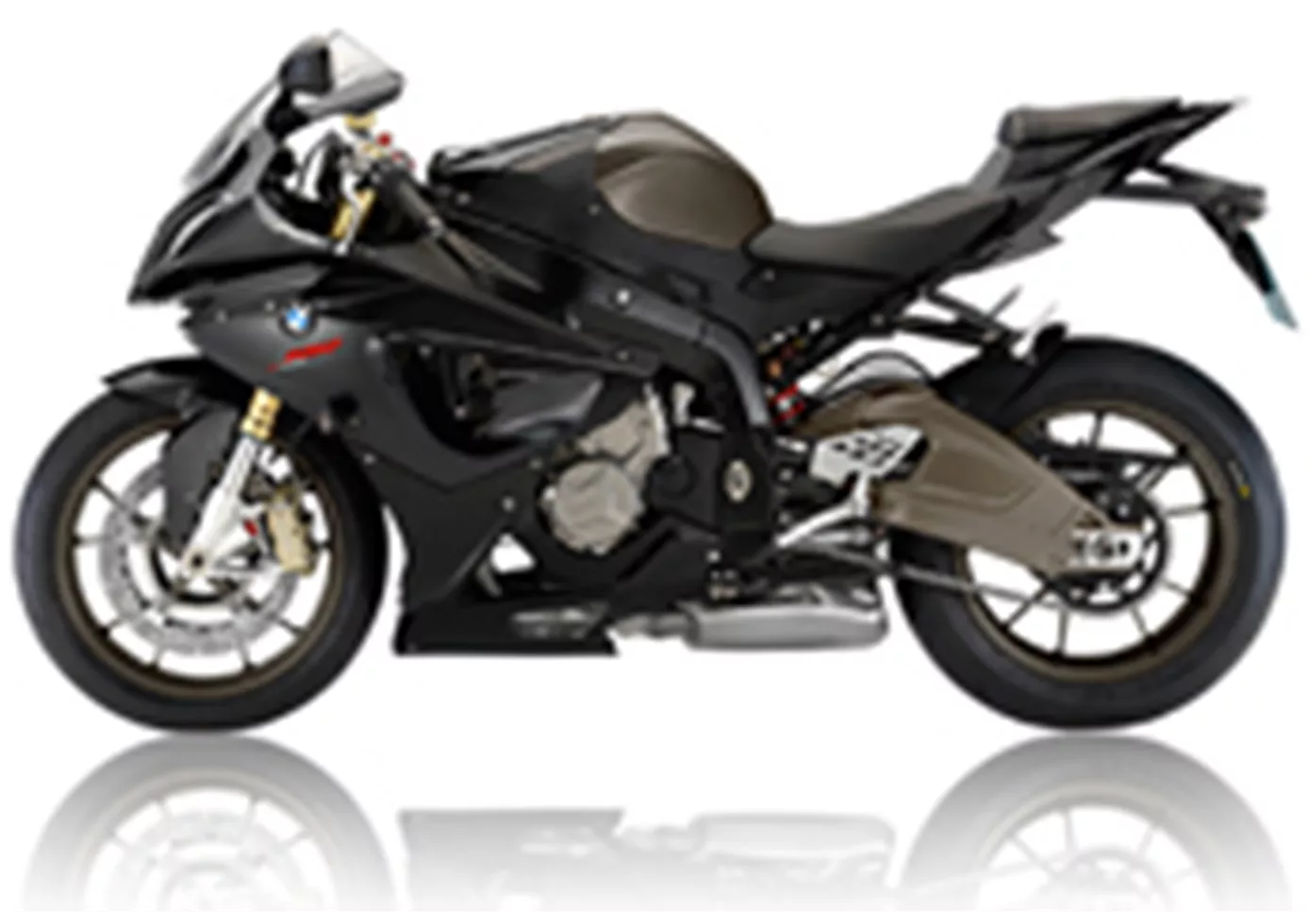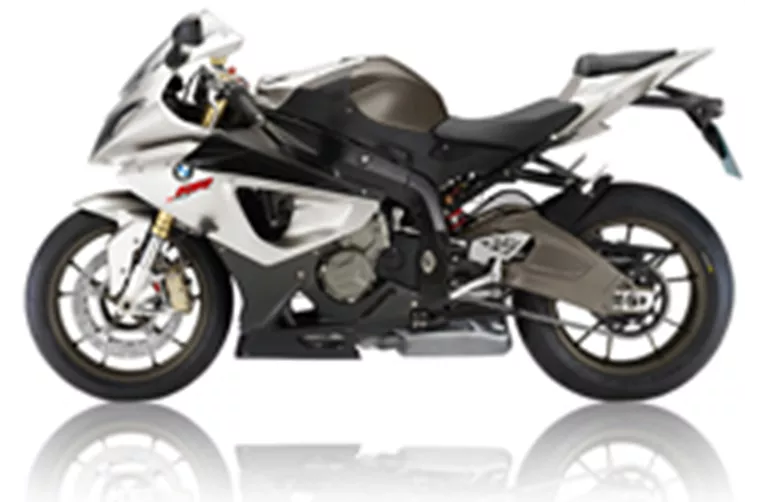BMW S 1000 RR 2010 vs. Yamaha R1 2015

BMW S 1000 RR 2010

Yamaha R1 2015
Vue d’ensemble - BMW S 1000 RR 2010 vs Yamaha R1 2015
The BMW S 1000 RR 2010 and the Yamaha R1 2015 are both powerful supersport motorcycles that offer impressive performance on the road. However, there are some notable differences between the two models.
In terms of engine specifications, the BMW S 1000 RR 2010 has a bore of 80 mm and a stroke of 49.7 mm, while the Yamaha R1 2015 has a slightly smaller bore of 79 mm and a stroke of 50.9 mm. The BMW S 1000 RR 2010 produces 192 HP of engine power and 112 Nm of torque, while the Yamaha R1 2015 offers a slightly higher engine power of 200 HP and 112.4 Nm of torque. Both motorcycles have a compression ratio of 13 and feature 4 cylinders with a displacement of around 1000 ccm.

BMW S 1000 RR 2010
In terms of suspension, the BMW S 1000 RR 2010 features a telescopic fork in the front, while the Yamaha R1 2015 has an upside-down telescopic fork. Both motorcycles have an aluminum frame, with the BMW S 1000 RR 2010 featuring a twin tube frame and the Yamaha R1 2015 featuring a Deltabox frame. Both motorcycles also have double disk brakes in the front and similar tire widths of 120 mm in the front and 190 mm in the rear.
In terms of dimensions and weights, the BMW S 1000 RR 2010 has a wheelbase of 1432 mm and a seat height of 820 mm. It has a kerb weight (with ABS) of 207 kg and a fuel tank capacity of 17.5 liters. On the other hand, the Yamaha R1 2015 has a slightly shorter wheelbase of 1405 mm and a higher seat height of 855 mm. It has a kerb weight (with ABS) of 199 kg and a fuel tank capacity of 17 liters.
Now, let's take a closer look at the strengths and weaknesses of each motorcycle. The BMW S 1000 RR 2010 is known for its superior performance and well-functioning driving aids. It is a very fast motorcycle and offers an optimal price for its capabilities. On the other hand, it has some weaknesses in terms of agility and complicated handling. It also lacks in terms of braking stability due to its high weight.

Yamaha R1 2015
On the other hand, the Yamaha R1 2015 has its own set of strengths. It is known for its crazy sound and rev-happy engine with a strong peak. It provides a great racing feeling in the saddle and comes with a superior electronics package. The Yamaha R1 2015 also boasts high-quality workmanship. However, it has some weaknesses as well. It experiences torque sag in the middle and lacks stability in the braking zone.
In conclusion, both the BMW S 1000 RR 2010 and the Yamaha R1 2015 are powerful supersport motorcycles with their own set of strengths and weaknesses. The BMW S 1000 RR 2010 offers superior performance and well-functioning driving aids, while the Yamaha R1 2015 provides a great racing feeling and a superior electronics package. Ultimately, the choice between the two will depend on the rider's preferences and priorities.
Caractéristiques techniques BMW S 1000 RR 2010 par rapport à Yamaha R1 2015
Avantages et inconvénients en comparaison
Avantages et inconvénients en comparaison
BMW S 1000 RR 2010

Nous le devons à un ordre strict et impitoyable du patron. Il y a des contrôles de performance sévères avant que les S 1000 RR ne quittent l'usine. Chez BMW, on ne voulait pas se mouiller et risquer qu'un seul rapport de banc d'essai décevant trouve le chemin des médias.
Yamaha R1 2015

La nouvelle R1 est une grande réussite et n'a plus rien à voir avec le modèle précédent. Celle-ci était considérée comme une bonne moto de campagne et il fallait investir lourdement pour les excursions sur les pistes de course. Aujourd'hui, c'est l'inverse. La nouvelle R1 a été développée en mettant clairement l'accent sur les pistes de course. Le package électronique semble exceptionnel, les technophiles y trouveront leur compte. Les fans de Yamaha ne peuvent que sauter sur l'occasion, ils ont enfin une moto digne de ce nom. La R1 présente de légères faiblesses au freinage sur piste, où elle devient un peu instable. Ceux qui aiment acheter une moto de course prête à l'emploi, sans devoir travailler sur le châssis, ont intérêt à choisir la R1M. La suspension électronique d'Öhlins fonctionne à merveille et ne présente aucune faiblesse. Pour une utilisation purement sur circuit, il est également facile de corriger la deuxième faiblesse de la R1. Le trou de couple au milieu peut être facilement comblé par une nouvelle cartographie.
Comparaison des prix Prix moyen du marché BMW S 1000 RR vs Yamaha R1
There are a few key differences between a BMW S 1000 RR 2010 and a Yamaha R1 2015. There are the same number of bikes of both models available on the 1000PS.de marketplace, specifically 6. It takes less time to sell a BMW S 1000 RR with 52 days compared to 76 days for a Yamaha R1. Since model year 2010 1000PS.de editors have written 135 reviews for the BMW S 1000 RR and 80 reviews for the Yamaha R1 since model year 2005. The first review for the BMW S 1000 RR was published on 4/16/2008 and now has more than 4,000 views. This compares to more than 3,900 views for the first review on Yamaha R1 published on 4/28/2003.




















